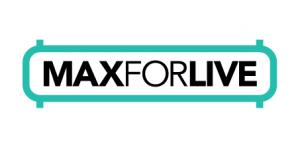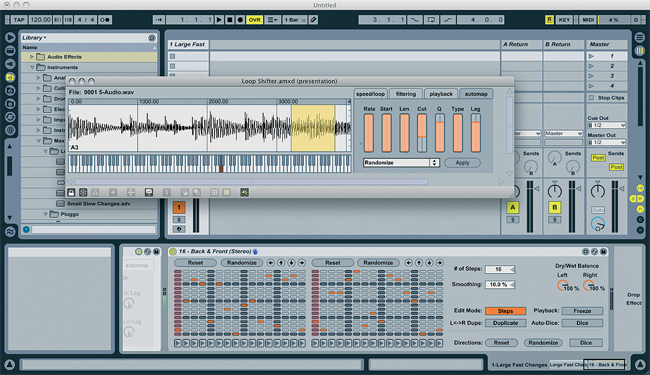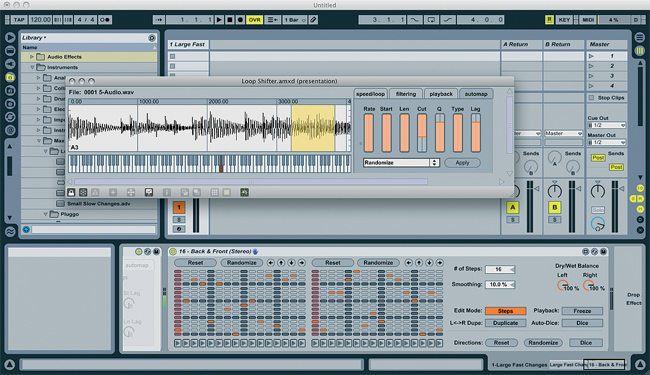 In 2009, when Ableton announced a partnership with legendary, if under-recognized software lab Cycling ’74, music tech nerds the world round (including, shamelessly, yours truly) rejoiced: here were two forward thinking and proven developers collaborating in what might just be the next great evolution of music software: user modifiable, native effects, instruments and custom toolkits. For producers and composers the possibilities for sound design were endless; for DJs it seemed a whole new world of performance tools, which would make Moldover’s Smart-Mixer look as sophisticated as the unfocussed finger painting of a retarded ape, was on the horizon.
In 2009, when Ableton announced a partnership with legendary, if under-recognized software lab Cycling ’74, music tech nerds the world round (including, shamelessly, yours truly) rejoiced: here were two forward thinking and proven developers collaborating in what might just be the next great evolution of music software: user modifiable, native effects, instruments and custom toolkits. For producers and composers the possibilities for sound design were endless; for DJs it seemed a whole new world of performance tools, which would make Moldover’s Smart-Mixer look as sophisticated as the unfocussed finger painting of a retarded ape, was on the horizon.
It’s now been 18 months since the dream was realized but instead of soaking up the glorious new halcyon days of shared DIY resources by the mountainload, we find instead a real dearth of material. The biggest Max For Live community on the web, maxforlive.com, has at the time of writing fewer than 500 devices available – hardly setting the world on fire. MFL was well conceived and marketed; the pricing was reasonable and the implementation wickedly intelligent and beautifully designed. So what happened?
To answer that, we need to know a bit about how MFL works. It’s a proprietary version of Max/MSP, a modular programming environment that has the user connecting small, and ostensibly simple, objects together with virtual patch cords. Data flow through these cords and between objects that modify them in some way, before finally resulting in some kind of output, be it audio, MIDI or otherwise.
But for all the supposed simplicity of modular programming, Max requires the user to become familiar with peculiar functions and how they work. A lot of them. This is actually Max’s great strength: the tools you’re working with are elemental building blocks and so can be kneaded into just about anything you can imagine, and with MFL the objects include not only MIDI and audio tools but objects that provide access to Live’s own API, meaning that developers can – and do – create devices capable of integrating with the host in ways that no VST/AU/RTAS device could ever hope to achieve.
The downside to this versatility is the learning curve. Despite Ableton’s and Cycling’s consistently wonderful tutorials, there are no shortcuts here. You really need to go through the hard yards to learn to speak Max, before you can create anything of power and finesse. There’s no quick way to design, build and implement your device from the ground up – you’re using the basic, fundamental components, remember?

Compare this to Reaktor, a powerful toolkit in its own right and probably the nearest thing MFL has to a competitor. Compatible with any VST host – unlike MFL – Reaktor relies on simple graphical modules that most performers will already be familiar with: here’s an LFO, whole and complete, and ready to plug in. Here’s a sine wave generator. Here’s an audio input. Chain these things together to build away. Reaktor has only a fraction of the objects that Max has, and is not capable of anything like Max’s flexibility, but it is much easier to get your hands into and start getting interesting results. It might sound like a bit of blunt object next to Max, and it is, but then who wants to learn how to build an audio output before they can hear the synthesizer they’re working on?
Don’t write off Max For Live – I certainly haven’t; I still think it has the potential to usher in a new era for composers and performers alike, I just see now that it’s going to be a long, slow process that depends on the determination of the community to follow through and share amongst themselves. Which, as a card-carrying music/tech nerd myself, is fine by me.




